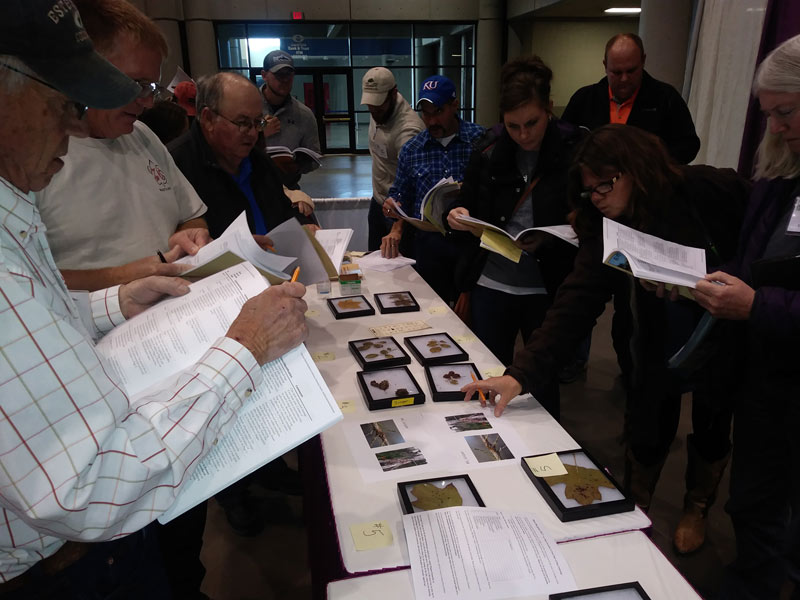
Attendees at the Kansas Turfgrass Conference in Topeka on Wednesday find out how well they really know their pests in Kansas State University’s Pesticide Booth challenge. Photo by Howard Richman
During his lengthy and decorated career, Bruce Martin, Ph.D., had never passed along his wisdom in boots-on-the-ground fashion in a certain heartland state.
Well, Martin can now check that one off his places-to-speak list — just in time, too. Martin, who is retiring in June, has spent the past two days in Kansas as a guest presenter in the 67th annual Kansas Turfgrass Conference in Topeka. Martin, plant pathologist at Clemson University’s Pee Dee Research and Education Center in Florence, S.C., was invited to participate by his friends Jack Fry, Ph.D., and Megan Kennelly, Ph.D, both with Kansas State University’s turfgrass program.
“I have been to Kansas, but had not spoken at a turfgrass conference here,” says Martin, who has received GCSAA’s Col. John Morley Distinguished Service Award and the Fred V. Grau Turfgrass Science Award. “I’ve spoken in probably 40 states, but never here. They have such a good program at K-State; they really haven’t needed me.”
Approximately 600 people signed up for the three-day event, which includes a trade show and concludes Thursday. Those in attendance have been able to hear from experts such as Martin; Charles Fontanier, Ph.D., of Oklahoma State University; Gregg Munshaw, Ph.D., of the University of Kentucky; and Cole Thompson, Ph.D., of the University of Nebraska.
Munshaw discussed management practices to reduce pesticide use. “They (pests) make the grass look bad. When the grass looks bad, somebody is pointing the finger at somebody,” said Munshaw, later adding, “If you have to treat curatively, get the pests while they’re small.”
The Kansas GCSA and Ryan Lawn & Tree each made monetary donations to K-State’s program. “We’re hoping with this money that we are helping you (conference attendees) solve your problems,” said Candice Shoemaker, Ph.D., who oversees the university’s horticulture department.
One issue facing K-State is the turfgrass student population. There are only 27 students in the golf course/sports turf program, which 15 years ago boasted more than 120 students. “Employers are having a hard time finding qualified employees,” said Steve Keeley, Ph.D., professor in turfgrass research at K-State. “But we think it’s a good time to get in. High school students in particular are not working outside and getting exposed to this industry. Look out for that. Bring them in. We’re all going to need them for this business.”
Attending events like the Kansas Turfgrass Conference is important to GCSAA Class A superintendent Nathan Ratzlaff. “You learn, network, and it’s a chance to show support to the vendors who help us out throughout the year,” says Ratzlaff, a five-year association member. “It’s just a good experience.”
Howard Richman is GCM’s associate editor.